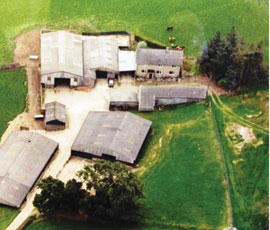Land market 2012 – North Wales

Where will land prices go in 2013? We ask agents around the country to sum up the market in 2012 and to set out what will influence buyers, sellers and prices next year.
2012 market – key features
Limited supply and localised competition assisted in underpinning strong market prices.
Commercial farmers were principal purchasers in 2012. Grade 3 land of 5½ acres and some 19 acres realised from £11,500-£12,000/acre.
Effective Grade 4 blocks of land mainly ranged between £7,000 and £8,000/acre, with one parcel of 16½ acres achieving £9,500/acre.
- Land market remained strong
- Local interest influential
- Demand outstripping supply
| Sale highlight of the year (pictured above) |
|---|
| Parc y Maes Farm, Nantglyn, Denbigh – a productive, stock-rearing, well-equipped upland unit of just over 72 acres realised £730,000 with a four-bedroom farmhouse, range of traditional and more modern outbuildings. The chiefly Grade 4 (and part 5) land averages about 900m above sea level, with about 50% foragable quality and the balance more limited, grazing upland. |
2013 outlook – main market influences
Continued buoyancy influenced potentially by:
- Strength of commodity prices/export market
- CAP reform
- Quantity of land for sale
- Affordable finance
2013 outlook – what will happen to prices?
Prices are anticipated to remain relatively stable.
How much land will come on the market in 2013?
Similar quantity to 2012 is envisaged, with transaction volumes remaining constrained. Although CAP reform may have some bearing to limit available supply, there are invariably business or personal reasons that are significant determinants.
Easiest farm to sell in 2013?
An equipped productive (particularly lowland) farm of 150 acres or more.
Most difficult farm to sell in 2013?
Residential or “lifestyle” holdings, owing largely to economic and finance difficulties.
Also continued limited demand for upland commercial units that have a significant proportion of rough grazing.
